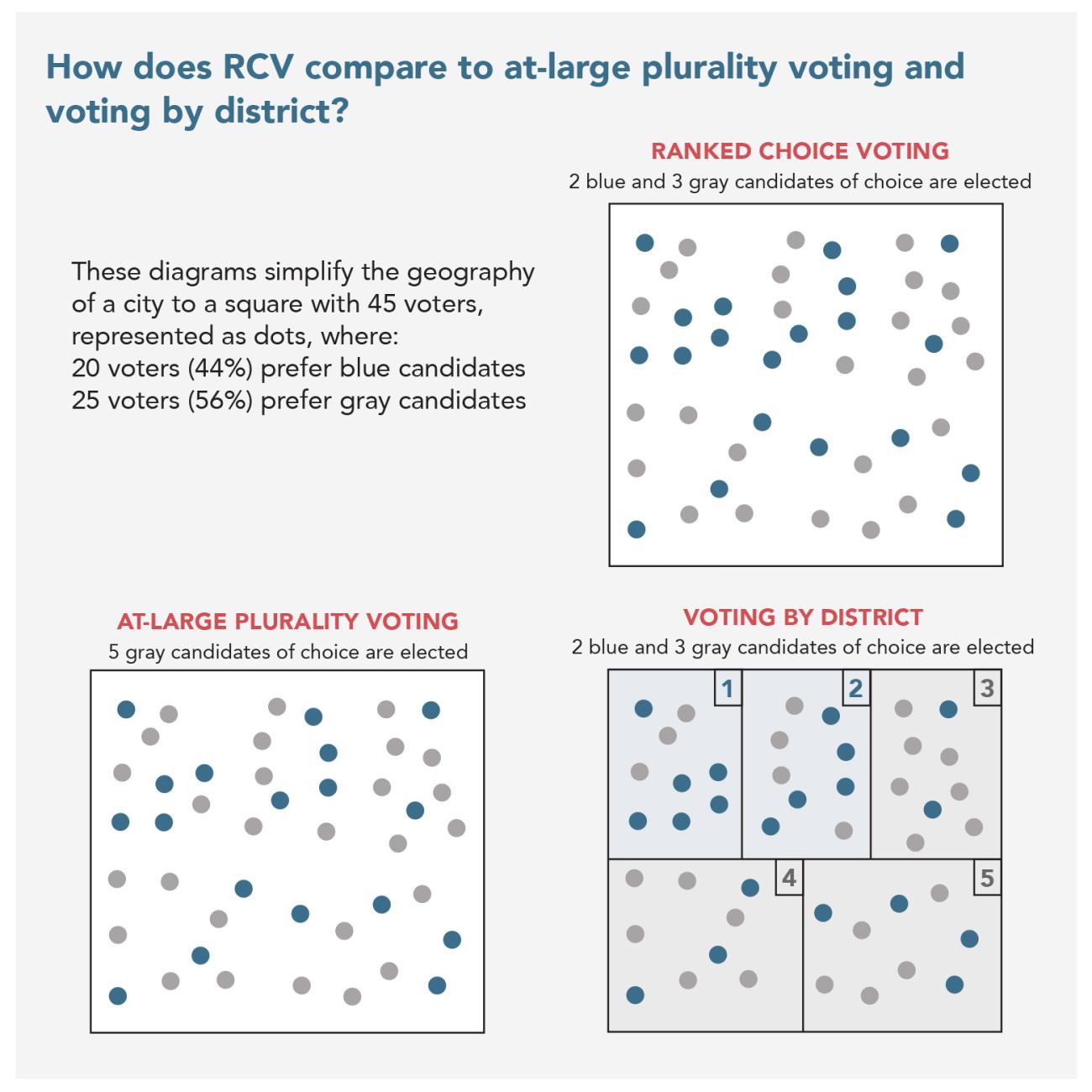The U.S. Constitution and federal Voting Rights Act guarantee that every vote counts equally, and that every voter has an equal voice.
Unfortunately, politicians sometimes shirk these laws by manipulating election systems to get their preferred outcome.
Certain electoral systems, including at-large systems, can silence communities of color and deprive them of an equal opportunity to participate in the political process.
This happens especially in places where voting is “racially polarized,” or when different racial or ethnic groups consistently vote differently.
In those communities, an at-large election system leads to voters of color getting drowned out by the votes of a white-voting majority that does not support the candidates preferred by voters of color.
Courts have repeatedly recognized that at-large elections can discriminate against communities of color.
In fact, many at-large voting systems have been struck down for violating Section 2 of the Voting Rights Act, which helps protect voters of color from election systems that weaken their voting strength.
What are “at-large elections?”
An at-large seat is one that represents an entire jurisdiction (like a city or town) and gets voted on by everyone in that city or town.
There are many varieties of election systems that incorporate at-large seats, but an at-large system generally refers to a system where every candidate on a governing body is elected by a plurality of all voters in the jurisdiction. In other words, the candidates who get the most votes from the entire city win.
At-Large Elections with Residency Districts
In an at-large election system with residency districts, all or most seats on the governing body represent a district.
Candidates running for a seat in this type of system must reside in the district they want to represent, but they are elected by voters of the entire city — not just voters who live in the same district as the candidate.
For example, in a city with four districts that uses this at-large system, there would be four seats on the city council up for election.
The candidates must live in the district they are running to represent, but all the voters in the city get to cast a vote for all four districts.
At-Large Elections with a “Numbered Post” System
In this type of system, there are no “districts.” Instead, every seat on the governing body represents the entire jurisdiction.
The at-large seats are numbered, and candidates compete for each numbered seat.
Every voter in the city casts one vote for their preferred candidates in each of these races.

Where do at-large elections run into issues?
Taking the at-large system with residency districts as an example, assume that Black voters make up 35% of the city’s voting-age population, but 85% of the voting-age population in District 2.
Also assume that Black voters and non-Black voters are politically polarized, meaning non-Black voters rarely support the candidates preferred by Black voters and vice versa.
Under an at-large election system for city council, Black voters in District 2 will likely have their voices drowned out by the 65% of the city that is non-Black — despite the reality that, with four seats available, fair representation would mean Black voters should be able to elect at least one candidate of their choice to the city council.
In other words, the at-large election system would enable 65% of the electorate to elect 100% of the city council seats.
And Black voters — and any concerns or grievances they may have — would be totally unrepresented in the city council.
This practice of silencing voters of color through at-large election systems was a common vote dilution tactic of the Jim Crow era.
It’s also one of the reasons that Section 2 of the Voting Rights Act of 1965, which has been fundamental to promoting fair representation in our democracy, was enacted.
However, discriminatory at-large election systems still exist across the United States.
What are fairer options than at-large elections?
One of the remedies to at-large elections that silence voters of color are single-member districts.
Single-member districts, when drawn fairly, allow voters of color to elect their candidates of choice by having residents vote for candidates only within their district, as opposed to city-wide.
The city of Virginia Beach, Virginia’s most populous city, is an example of a city switching from an at-large system with residency districts to single-member districts, because the at-large system diluted the voices of the city’s Black, Latino, and Asian American voters.
Before CLC filed a lawsuit, the entire city voted for all 11 city council members (10 city councilors and the mayor).
This system of at-large voting was found to prevent Virginia Beach’s Black, Latino, and Asian American voters from electing a candidate who would best serve their communities.
Furthermore, a city-conducted opinion poll found that 81% of residents supported the switch to single-member districts.
Now, Virginia Beach’s Black, Latino, and Asian American voters have the chance to elect their candidates of choice through the newly established single-member district system.
The proof is in the 2022 city council election, where residents voted in the most diverse city council in the city’s history.
Another remedy to at-large elections is proportional representation, an electoral system that elects multiple representatives in each district or jurisdiction in proportion to the number of people who vote for them.
Proportional representation is common in most democracies around the world and has been gaining popularity among local governments the United States.
For example, Portland, Oregon recently adopted proportional representation for its city council, with the first election under the system set for fall 2024.
CLC will continue to fight to achieve a fair, representative government that allows voters of color the opportunity to elect candidates who will best serve their community.
After all, we cannot have a fair and inclusive democracy unless voters of color have an equal voice.

